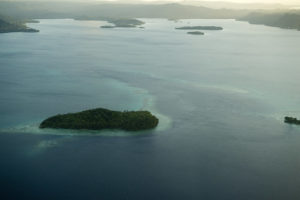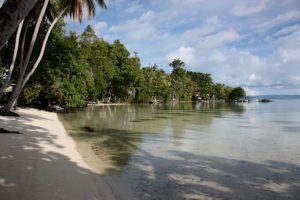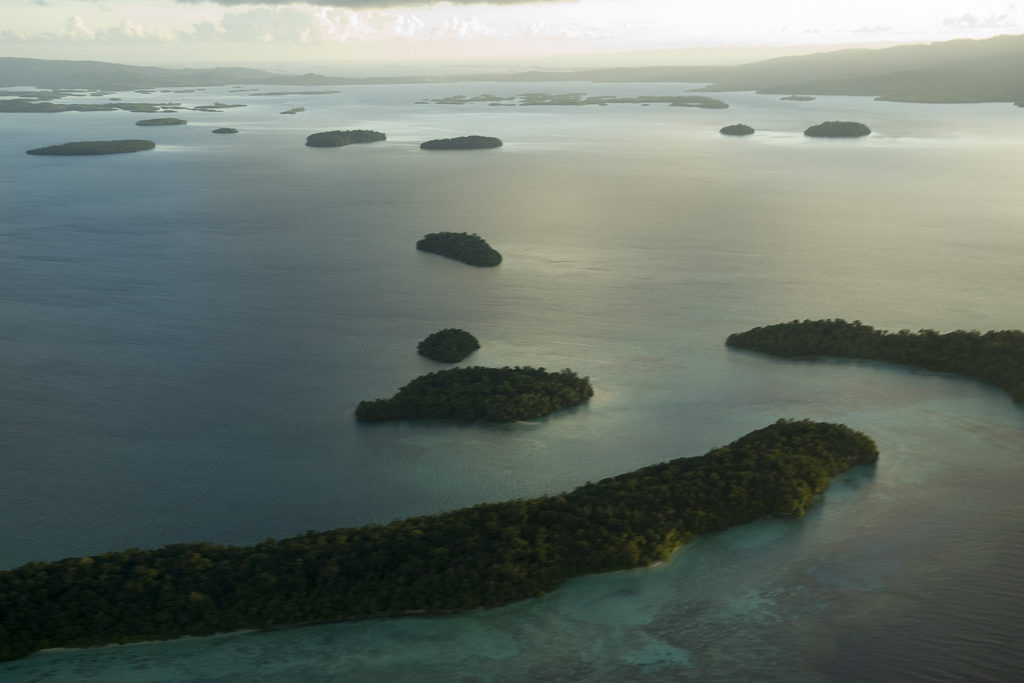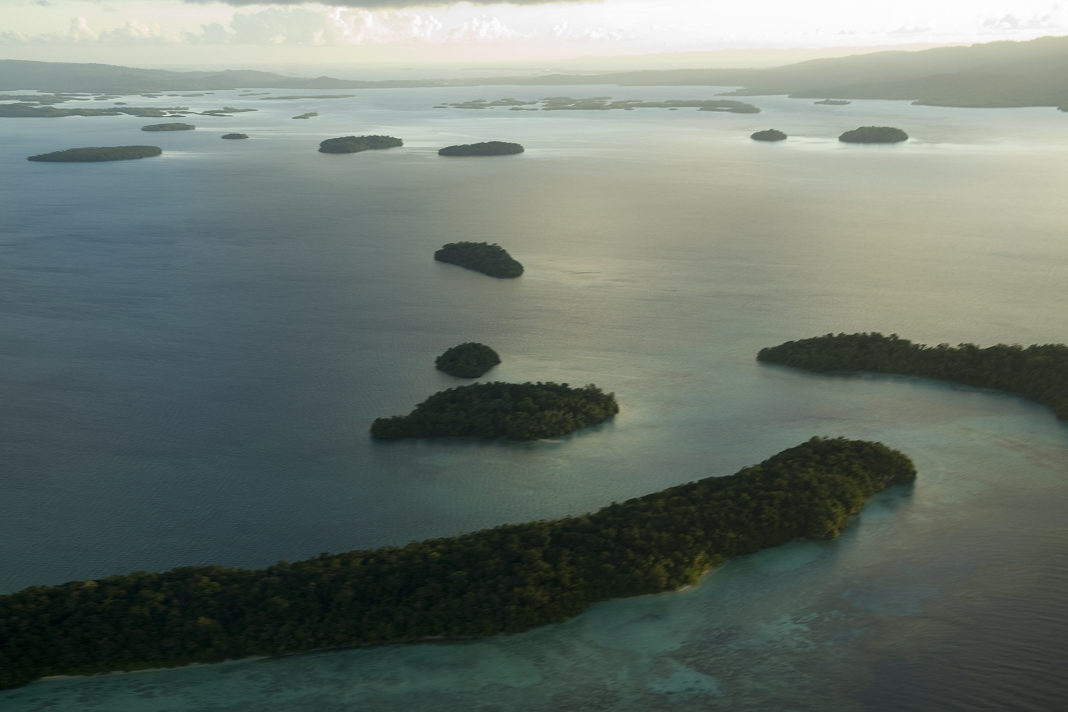Marovo Lagoon is the largest saltwater lagoon in the world. Located in the New Georgia Islands, surrounded by Vangunu Island and Nggatokae Island, both extinct volcanic islands, at 8.48°S 158.07°E. It is part of the Solomon Islands. It encompasses 700 km2 and is protected by a double barrier reef system. Marovo Lagoon is identified as an area with high biodiversity and conservation values.
 The word “Marovo” is derived from the name of the “Marovo Island” located in the central of the Lagoon.
The word “Marovo” is derived from the name of the “Marovo Island” located in the central of the Lagoon.
Due to tectonic, reef-building, and island arc system processes, the double barrier lagoon is a result of volcanism of the Pliocene and later Pleistocene, with volcanic activity continuing at Kavachi submarine volcano 25km offshore to the southwest. The lagoon is bounded to the north and east by a chain of barrier islands that have formed from elevated reefs from sea level to 25m above sea level.

At the southeastern end, these islands form a double chain separated by water up to 170m deep. To the south and west, Marovo is fringed by three large volcanic islands (Gatokae, Vangunu, and New Georgia) and is dotted with hundreds of smaller raised reefs that have formed rainforest-covered islands fringed by mangroves and coral reefs. The mix of oceanic, coral reef, seagrass, estuarine, and soft bottom habitats makes Marovo a particularly productive and diverse ecosystem of international significance.

The lagoon is a popular destination for diving and is a tourism hub for travelers from Australia, New Zealand, Europe, and the United States. You can travel to the Lagoon from the capital city of Solomon Islands, Honiara for 1 hour on a twin otter plane or 10 hours on a weekly ferry.
According to Wikipedia; UNESCO















